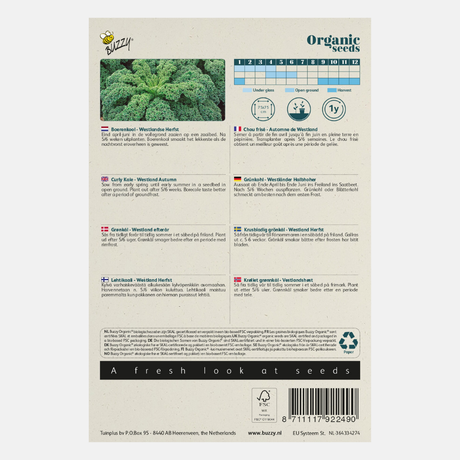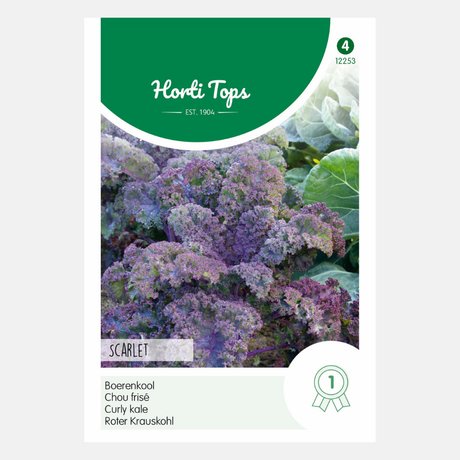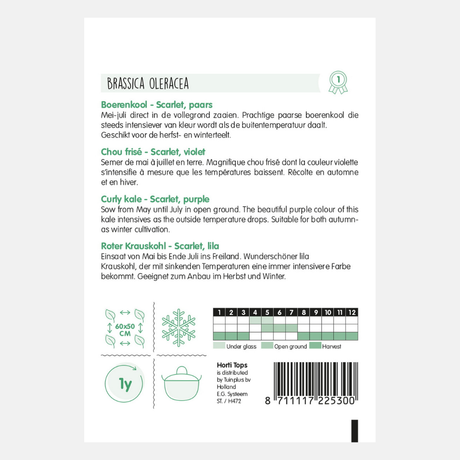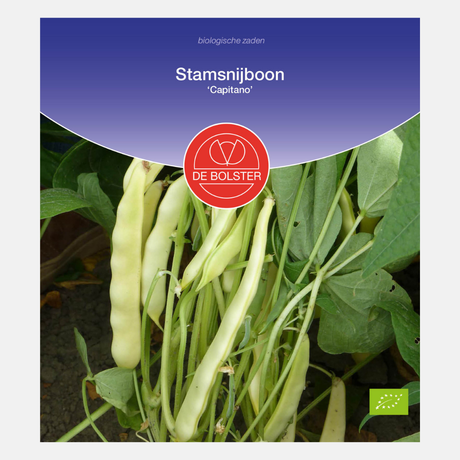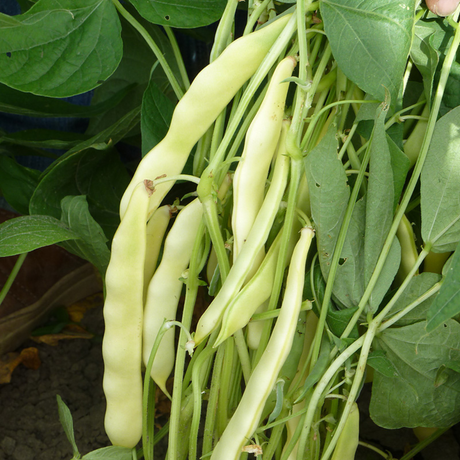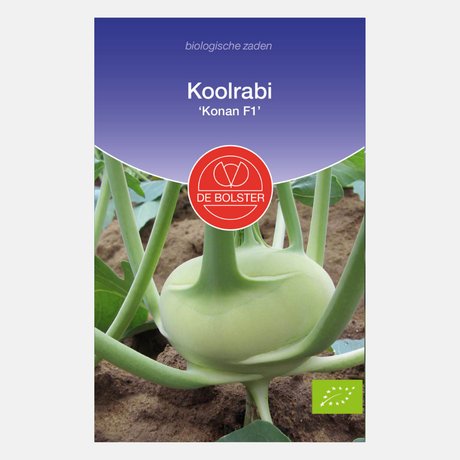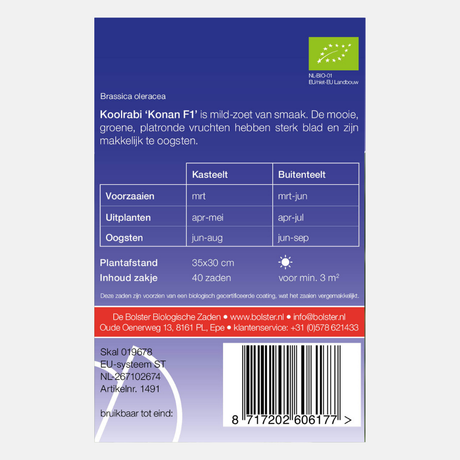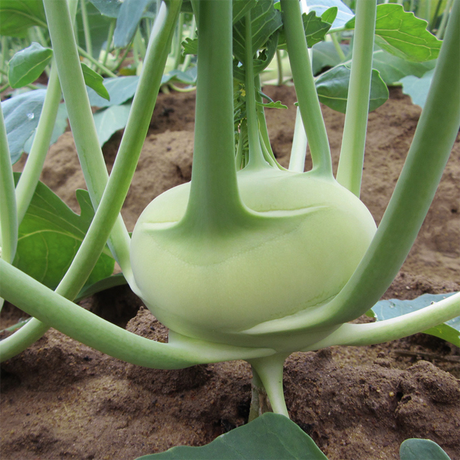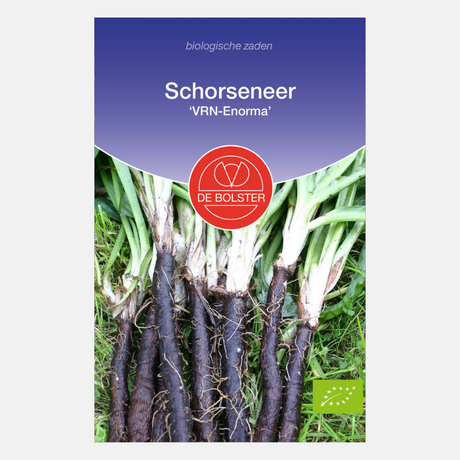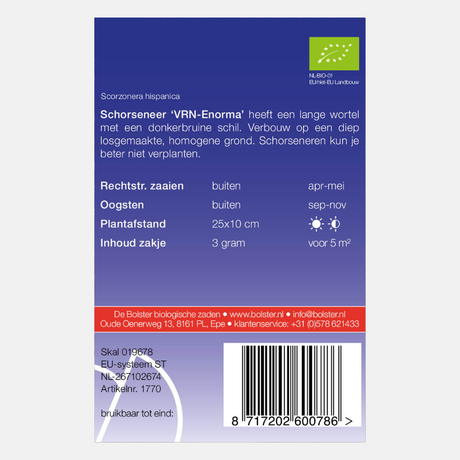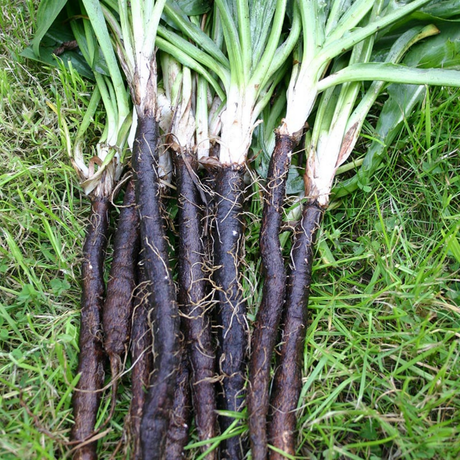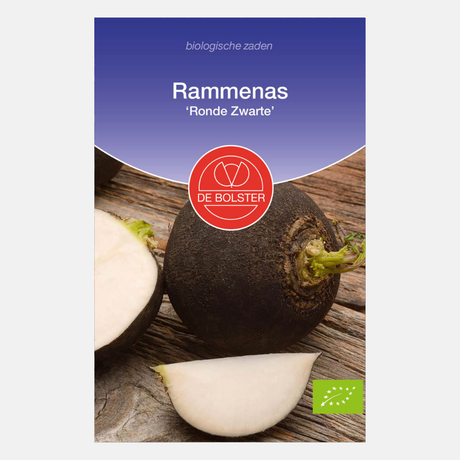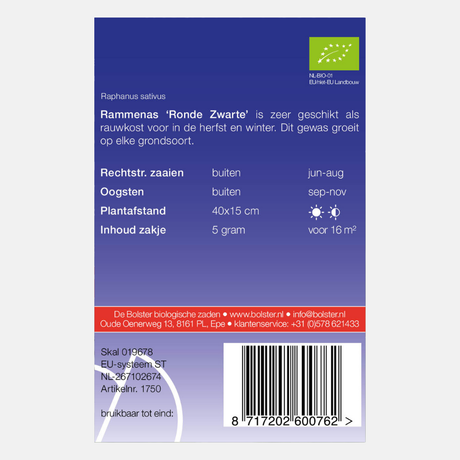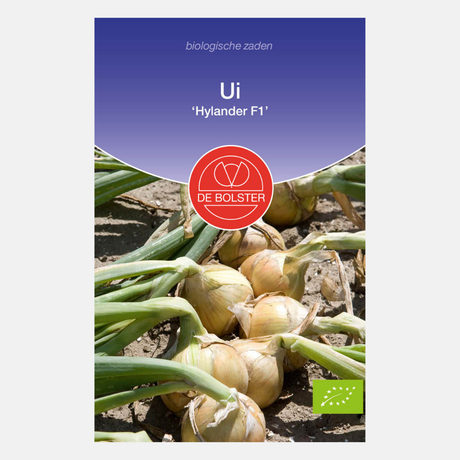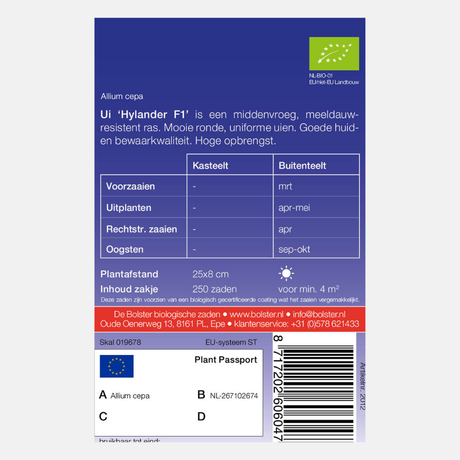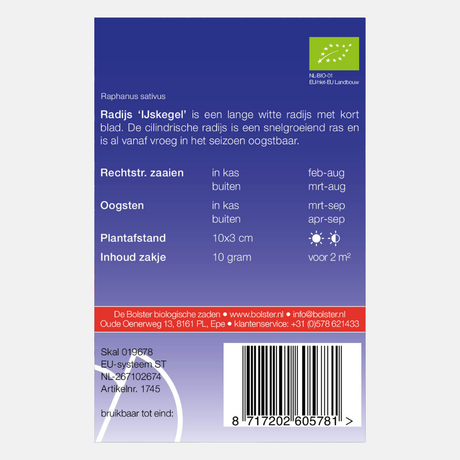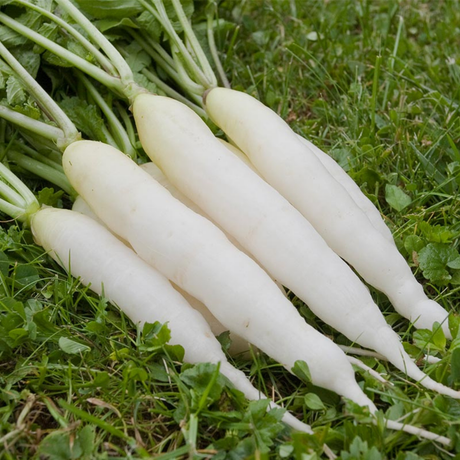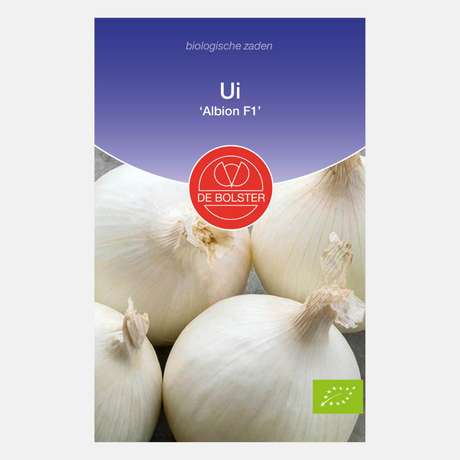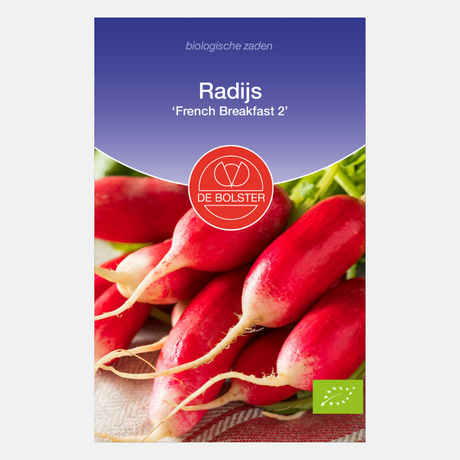- Regular price €1,44Unit priceUnavailable
- Regular price €2,93Unit priceUnavailable
- Regular price €2,77Unit priceUnavailable
- Regular price €2,72Unit priceUnavailable
- Regular price €2,77Unit priceUnavailable
- Regular price €3,91Unit priceUnavailable
Kale 'Vert Demi-Nain'/'Medium Fine Curl'
Regular price €1,44Unit priceUnavailable- Regular price €4,94Unit priceUnavailable
Kolen zaaien in beeld
In deze video laat Tom zien hoe hij kolen kweekt.
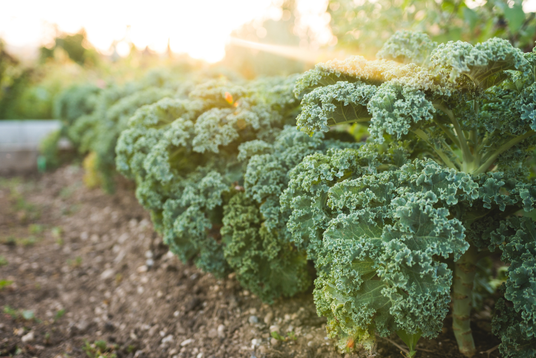
Lees ook onze kweekgids over boerenkool kweken.
Dit vind je misschien ook leuk
View allBoerenkool zaden kopen: kracht uit eigen tuin
Boerenkool wordt in de groentetuin, in bakken of in de volle grond geteeld en kent diverse rassen, zoals de 'westlandse herfst' (een laat ras, geschikt voor winterteelt en goed bestand tegen strenge vorst), 'palmkool' (met lange tongen en vibrerende, donkergroene bladeren), 'gekroesde boerenkool' (met fijn gekruld blad dat goed vorst en enkele graden vorst kan verdragen) en rassen met opvallend lange tongen. Deze rassen zijn winterhard, verdragen koude nachten en blijven smakelijk, zelfs na strenge vorst.
Zaaitijd is meestal van mei tot juli; zaaien doe je bij voorkeur in een goed voorbereid zaaibed, gevolgd door opkweek van de jonge planten. Na enkele weken kun je de planten verplanten of plant steken op de definitieve plek voor optimale groei. Goede bemesting, bij voorkeur zonder kunstmest, is belangrijk voor een rijke oogst. Biologische boerenkoolzaden zijn vaak geschoond, afkomstig van gecontroleerde groentezaden en staan onder toezicht van Stichting Skal.
Boerenkool kan tot eind februari geoogst worden; geoogste bladeren kun je invriezen. In het voorjaar kunnen de planten doorgroeien of zelfs opnieuw uitlopen. Boerenkoolplanten moeten beschermd worden tegen rupsen, duiven en konijnen. De bloemen van boerenkool zijn waardevol voor bijen en dragen bij aan de biodiversiteit. Boerenkool is een smakelijk product dat in veel gerechten gebruikt kan worden en is een echte aanwinst voor elk artikel over wintergroenten.
Boerenkool zaden kopen: kracht uit eigen tuin
Boerenkool is een echte krachtpatser. Deze oer-Hollandse bladgroente is voedzaam, winterhard en verrassend veelzijdig. En het mooiste is: je kweekt hem eenvoudig zelf. Of je nu een ruime moestuin hebt of een bak op het balkon, boerenkool past overal.
In ons assortiment vind je een breed aanbod aan biologische groentezaden en producten, die regelmatig worden aangevuld (gevuld) met nieuwe rassen. Al onze groentezaden zijn geschoond en worden geteeld, geschoond en verpakt onder controle van Stichting Skal. De zaden zijn zonder kunstmest geteeld en voor een succesvolle teelt is goede bemesting van de grond essentieel.
Waarom kiezen voor boerenkool
Boerenkool is een van de sterkste groentes die je kunt telen. Hij groeit langzaam maar gestaag, is goed bestand tegen strenge vorst en kan enkele graden vorst verdragen, vooral tijdens koude nachten. Boerenkool verdraagt vorst en heeft weinig last van ziektes. In de winter staat hij stevig op het veld terwijl andere groentes het al hebben opgegeven. Boerenkool kan tot eind februari geoogst worden; daarna kunnen de planten in het voorjaar doorgroeien. In het voorjaar kan boerenkool gaan bloeien, waarbij de bloemen belangrijk zijn voor bijen.
- Lange oogstperiode, van oktober tot eind februari, ook geschikt als laat ras
- Sterk en weerbaar, ook bij kou, regen en tijdens nachten met vorst
- Goed bestand tegen strenge vorst, ideaal voor winterteelt
- Weinig verzorging nodig, ideaal voor drukke tuiniers
- Boordevol vitamines, vezels en antioxidanten
- Veelzijdig in de keuken, smakelijk na vorst, goed in te vriezen en op verschillende manieren te koken, van stamppot tot groene smoothie
- Voorjaar doorgroeien, na de winter kunnen planten opnieuw uitlopen
Bescherm jonge planten goed tegen rupsen, duiven en konijnen door ze af te dekken met gaas of doek. Zo bescherm je de oogst en blijft de plant gezond.
Bij Plukkers vind je boerenkool zaden die geselecteerd zijn op groeikracht, smaak en weerbaarheid. Zo leg je een stevige basis voor een rijke oogst.
Zo zaai en verzorg je boerenkool
De beste zaaitijd voor boerenkool is van mei tot juli. Zaai bij voorkeur in een goed voorbereid zaaibed voor een optimale opkweek. Na de opkweek worden de jonge planten verplant en met voldoende afstand (plant steken, ongeveer veertig centimeter) uitgeplant in de volle grond, bakken of groentetuin.
Boerenkool behoort tot een breed assortiment groentezaden. De zaden zijn geschoond en onder controle van Stichting Skal, zodat je verzekerd bent van biologische kwaliteit. Voor een goede groei is goede bemesting belangrijk, bij voorkeur zonder kunstmest.
Bescherm jonge planten tegen rupsen, duiven en konijnen door ze af te dekken met gaas of doek.
Standplaats: zon tot halfschaduw
Grond: voedzaam, luchtig en goed doorlatend
Afstand: ongeveer veertig centimeter tussen de planten
Water: regelmatig en gelijkmatig, maar niet te nat
Na het uitplanten heb je er weinig omkijken naar. Door te mulchen blijft de grond vochtig en voorkom je onkruid. Vanaf oktober kun je beginnen met oogsten. De planten blijven vaak tot februari oogstbaar, zelfs na vorst.
Boerenkool in de keuken
Verse boerenkool is zachter en sappiger dan je gewend bent uit de winkel. Boerenkool is niet alleen voedzaam, maar ook bijzonder smakelijk. Natuurlijk gebruik je hem in een stamppot, bijvoorbeeld met worst, maar probeer ook eens:
- Roerbakken met knoflook en olie
- In de oven als boerenkoolchips
- In een smoothie met appel of banaan
- Door de soep voor een extra vitamineboost
- Koken: boerenkool is ook goed te koken, bijvoorbeeld samen met bonen of als bijgerecht met worst
Tip: wacht tot er een keer nachtvorst overheen is gegaan. De bladeren worden dan zoeter van smaak.
Tip: boerenkool kan na de oogst goed worden ingevroren om de smaak optimaal te behouden.
Waarom kiezen voor Plukkers
Bij Plukkers draait het om zelf ontdekken en doen. We geloven dat tuinieren makkelijk en leuk moet zijn. Ons brede aanbod aan biologische groentezaden en producten wordt regelmatig aangevuld (gevuld) met nieuwe rassen, zodat je altijd iets nieuws kunt proberen. Onze boerenkool zaden en andere groentezaden zijn geschoond en staan onder controle van Stichting Skal, wat garant staat voor biologische kwaliteit. De zaden worden zonder kunstmest geteeld en een goede bemesting van de grond is essentieel voor een gezonde groei en een rijke oogst. Zo ben je verzekerd van duurzame en verantwoorde producten, geschikt voor iedere tuinier, of je nu net begint of al jaren zaait.
Je krijgt heldere instructies, praktische tips en ondersteuning bij elke stap. Geen ingewikkelde termen of moeilijke methodes, gewoon duidelijke uitleg en zaaiplezier.
Wil je boerenkool zaad kopen? Begin dan bij Plukkers en geniet binnenkort van een krachtige, winterharde oogst uit je eigen tuin.





